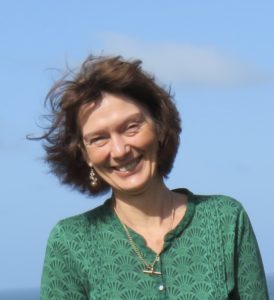Professor Ann Parry Owen: a rather obsessive interest in medieval Welsh language and literature

To mark the announcement of our 2019 cohort of Fellows, earlier this year we invited some of those elected to reflect on their career to date.
Below, you can find details of one such Fellow.
 Professor Ann Parry Owen specialises in the Welsh language, grammar, and poetry of the Middle Ages, especially the period 1100–1500.
Professor Ann Parry Owen specialises in the Welsh language, grammar, and poetry of the Middle Ages, especially the period 1100–1500.
She was inspired to enter into this field, she says, by “a rather obsessive interest in medieval Welsh language and literature – which started when I won a £9 book on a Welsh TV quiz programme when I was 12, which for some unknown reason I spent on four books: Pedeir Keinc y Mabinogi, Llawysgrif Hendregadredd, Canu Aneirin and Llyfr Gwyn Rhydderch. Fortunately, my wonderful Welsh teacher in Ysgol Dinas Brân, Llangollen, Mr Gwynne Williams, was willing to read them with me – I was hooked!”
She began her career as a Research Assistant at the Centre for Advanced Welsh and Celtic Studies working on the Poets of the Princes project, co-authoring two important volumes on the chief poet of that period (Gwaith Cynddelw Brydydd Mawr I and II). In 1994 she was appointed as Project Leader of the Poets of the Nobility project, and since then 44 volumes have appeared in the series. She is “very proud of the 44 volumes in the Poets of the Nobility Series,” not least because she was general editor and typesetter, but also because “the series pioneered digital print publishing in Wales in the 1990s.”
In 2007 Professor Parry Owen won the largest grant ever awarded to any Welsh institution (up to that time) by the Arts and Humanities Research Council (AHRC), for the Guto’r Glyn project. The primary aim of this project was to produce a new bilingual digital edition of the work of one of the greatest Welsh poets of the fifteenth century, and that work is now available online free of charge on the Guto’r Glyn website: gutorglyn.net/gutorglyn/index.
In co-operation with a digital specialist at Swansea University, Professor Parry Owen developed a pioneering method of presenting an edition of medieval poetry online. Part of the project involved developing a second website, Guto’s Wales, which describes various aspects of material life in fifteenth-century Wales. Working together with staff from the Royal Commission on the Ancient and Historical Monuments of Wales, a computer animation was also produced of a poet visiting a patron’s home and this was used to introduce fifteenth-century life and poetry to schoolchildren.
Between 2015 and 2017 Professor Parry Owen was a Co-Investigator on the Cult of the Saints in Wales project, on which she was responsible for re-editing three lengthy poems to saints Tysilio, Cadfan and David. She is now Co-Investigator on the University of Wales Trinity Saint David Sacred Landscapes project, working on a volume about the medieval poetry composed for the abbeys at Strata Florida and Valle Crucis. Since 2017 Professor Parry Owen has also served as a Senior Editor with Geiriadur Prifysgol Cymru, the University of Wales Dictionary of the Welsh Language.
Amongst her most important discoveries are:
- the text of a previously unknown bardic grammar from 1375, which she has named ‘Gramadeg Gwysanau’;
- proof that Carmarthen, not Chester, is the town which is the focus of Dafydd ap Gwilym’s famous poem ‘I’r Grog o Gaer’;
- a previously undiscovered poem composed most probably by Dafydd ap Gwilym to his own hair.
However, when asked what her proudest achievement was, she said: “being project leader at the Centre and encouraging and guiding a number of young scholars who have since excelled in their academic careers.”
She also has a keen interest in place-names and is the editor of Enwau Cymru, the journal of the Place-Name Society of Wales, as well as a member of the Welsh Language Commissioner’s Place-names Standardisation Panel. She hopes for an increased “understanding and appreciation of the richness of Welsh culture and learning in the past, and pride in the part played by the Welsh language as a rich medium for discussing the important matters of medieval Europe.”